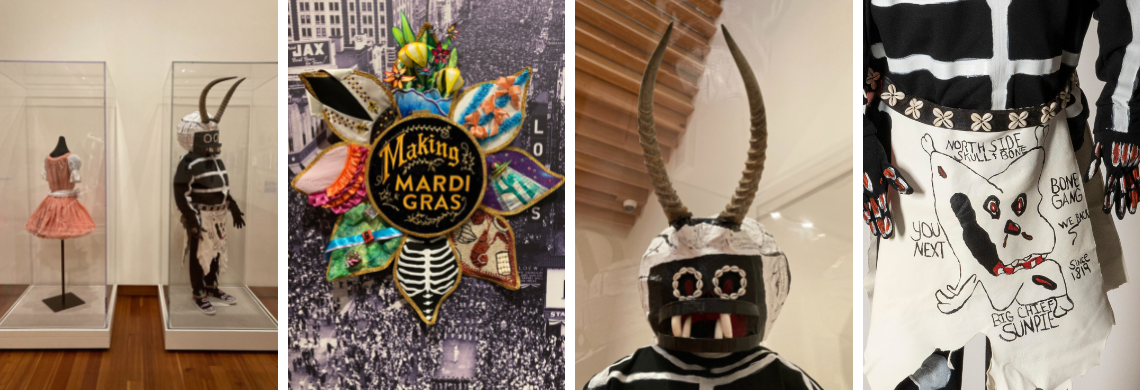Black masking traditions are often about honoring ancestors, reclaiming power in a world of oppression, and creating beautiful expressions of joy, grief, and strength. In addition to Mardi Gras Indians, Baby Dolls, and the North Side Skull and Bone Gang carry on the traditions of Black masking in the neighborhoods of New Orleans.
Skeletons are part of the transatlantic culture of the African diaspora, with representations in West African rituals, Caribbean Vodou practices, and Latin American Day of the Dead celebrations. For two centuries, the North Side Skull and Bone Gang has signaled the start of Mardi Gras Day, waking the spirits and serving as a reminder to live well before death.
Starting before dawn, they don skeleton suits, butcher aprons, and papier-mâché skulls to walk the streets of Tremé (a local neighborhood adjacent to the French Quarter), wielding bloody bones and rousing their neighbors with calls of “You next!”
Bruce Sunpie Barnes, Big Chief of the North Side Skull and Bone Gang, created a suit for the exhibition Making Mardi Gras, currently on view on an extended summertime run through August 7, 2022, at The Historic New Orleans Collection. Displayed with a suit is a series of videos that explain the history of the gang, detail the making of the suit, and explore the changing nature of the historic Tremé neighborhood, the setting for the gang’s Fat Tuesday route.
In the first video, Barnes traces the gang’s history to the early 19th century and explains the spiritual underpinnings of the practice.
In the second installment, Barnes walks the viewer through the components of a suit, describing materials used in its creation and their origins. “No matter what’s on the street, when they see skeletons coming, they either love it—they run to it—or they run from it, because it’s sort of like looking in the mirror,” he says.
In the concluding video of the series, Barnes discusses how Black masking traditions have changed as the neighborhoods where they are practiced undergo gentrification. Barnes also addresses the challenges presented to Black masking traditions by the COVID-19 pandemic.












